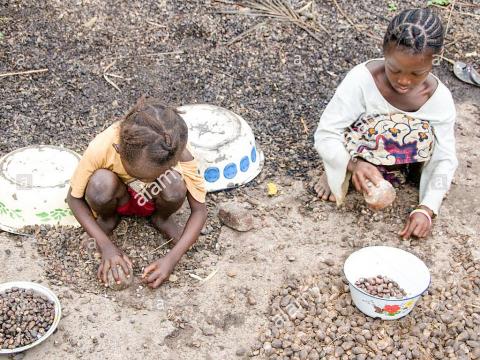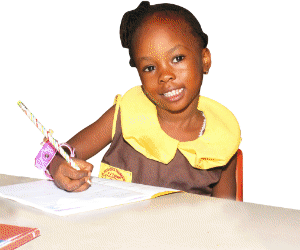By Hajaratu Kalokoh
The latest report on child poverty in Sierra Leone has revealed that the Northern region has the highest percentage of multidimensional child poverty in the country.
The Child Poverty 2018 report, a study conducted by Statistics Sierra Leone (Stats SL) and launched on Tuesday, indicates that 76% of children living in the northern region are deprived of at least one of their basic rights.
Koinadugu and Tonkolili, both in the north, topped the list as the worst performing districts, scoring a rating of 85% and 82% child poverty respectively.
All the districts in the region scored more than the national average rate of child poverty which is 66%, except for Bombali which scored 63%.
Despite the high rate of poverty among children in the northern region, 76% is a decrease of 6% compared to what obtained in the last study that was done.
The report which was launched at the Radison Blu Mammy Yoko Hotel was supported by UNICEF and the Government of Sierra Leone.
The study focused on six indicators to determine child poverty: health, water, sanitation, education, shelter and information.
But the situation is not just bad in the North; the Southern region has the second highest rate of child poverty, with 74%. In both regions the figures are an indication of an improvement, even though they are still ridiculously high.
In the Western Area Rural 45% of children are considered poor, whiles the Western Area Urban boasts of the lowest poverty rate with just 32% of children going through deprivation of at least one of their basic rights.
In the Eastern region, the figure stands at 71%.
During the launch of the report, Minister of Planning and Economic Development, Dr Francis Kaikai, said government already had a plan to tackle the worrying situation.
“This is adequately reflected in the Medium-Term National Development Plan (MTNDP 2019-2023) with its focus on human capital development, particularly education for development,” Minister Kaikai said.
He added: “It should be noted that multidimensional poverty reports play a leading role in informing national and global policies for effective poverty reduction across developing nations.”
In Tonkolili, where 36% of the children are deprived of information, while about 36% do not have access to safe drinking water, 30% of the children there also do not have access to health care when they get sick with diarrhea, cough or fever.
Country Representative of UNICEF, Rushnan Murtaza, explained that for children the world over, poverty is about much more than income. One in 3 are estimated to be living in multidimensional poor households, with poverty rates consistently higher than adults, she said, referring to the global situation.
‘I am sure you will agree that children experience poverty differently than adults as they depend on others to meet their needs; they have no control of household finances and no power to make decisions,” she said.
Some 41% of Sierra Leone’s population is under the age of 15. The figures in this report constitute a worrying sign that a huge number of the country’s population might be living in desperate conditions.
Minister of Technical and Higher Education, Professor Aiah Gbakima, said that the eradication of child poverty and hunger as well as combating inequality at all levels and environmental sustainability remain at the center stage of the new sustainable development agenda.
“The shift in the improvement of structural poverty of our country targeting children between the Western Area and that of rural communities is very clear,” he said.
“We all know the challenges we are going through in the area of education, health, social welfare, economic development, food production and many more. These are some issues that the New Direction manifesto seeks to address. Progress has so far been made in policies and service delivery system in order to ensure our children are protected and safe. Progress such as FQE (Free Quality Education) school feeding program, revitalization of early childhood learning and school bus services,” he added.
Prof. Osman Sankoh, Statistician General and Chief Executive Officer of Stats SL, spoke about the role of data in ending child poverty.
He said the only way to help resolve the issues of child poverty is by providing credible data to influence policies.
Copyright © 2019 Politico Online









